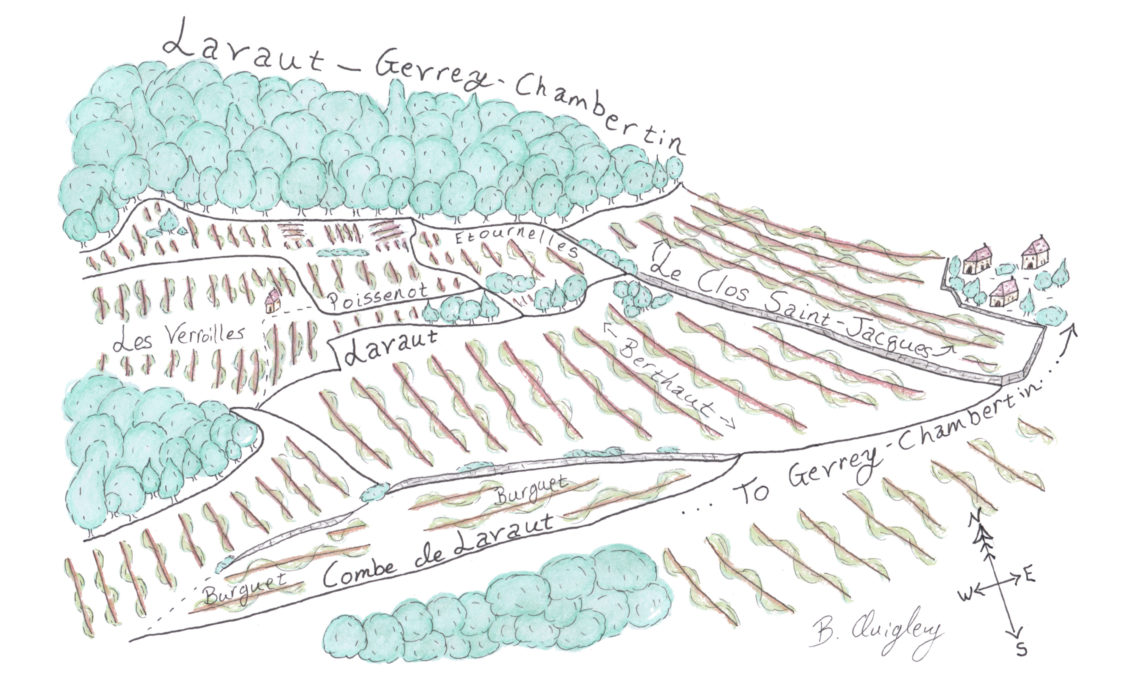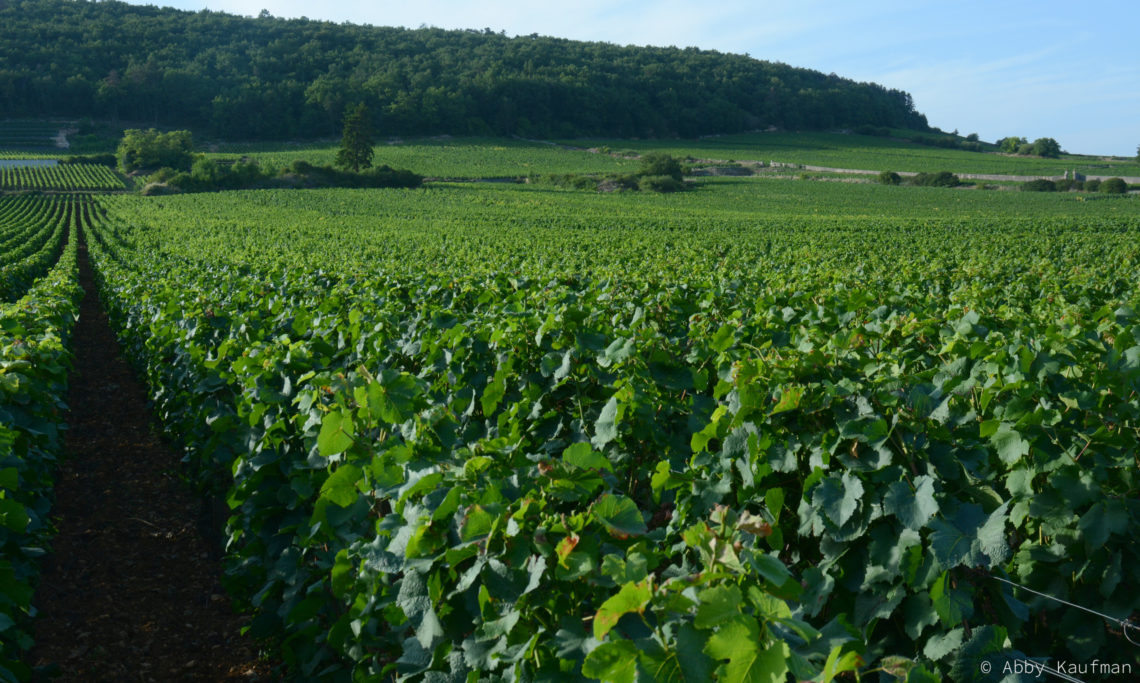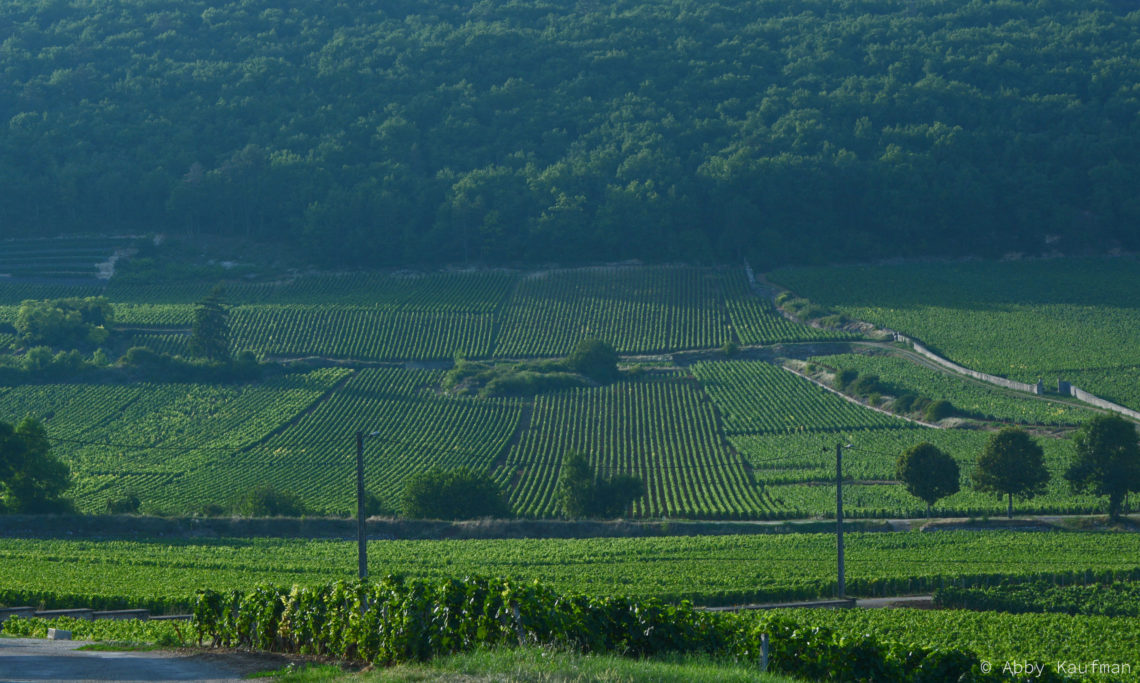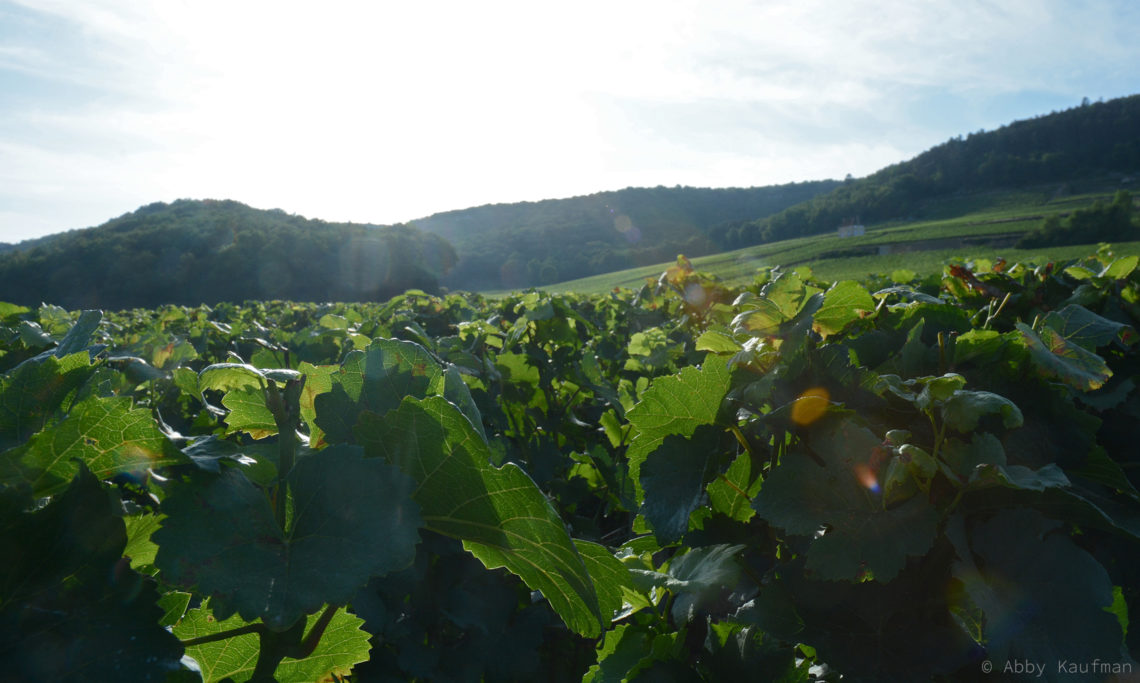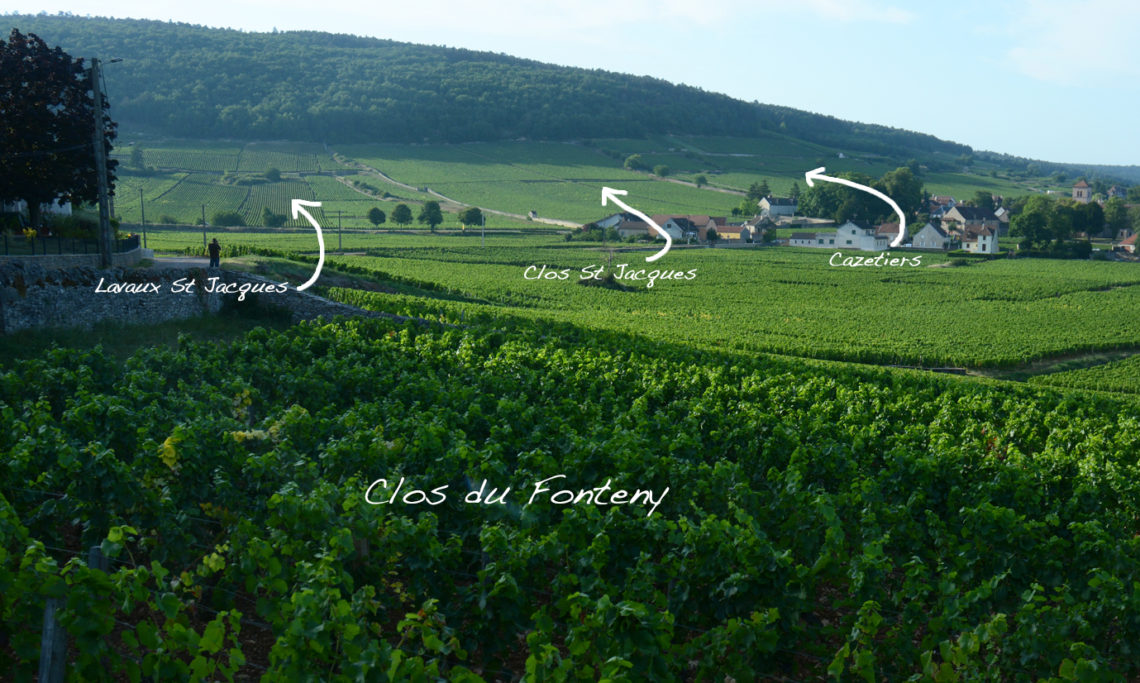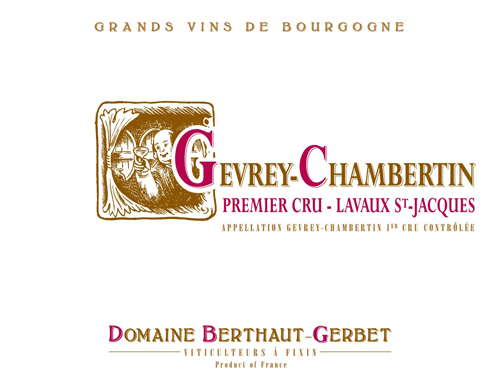Gevrey-Chambertin 1er Cru Lavaux St. Jacques
At a Glance
- Size: 0.13 ha (0.32 ac)
- Variety: Pinot Noir
- Vine Age: Planted in 1973
- Viticulture: Sustainable
- Vinification: Partial whole cluster (0-60%), cold macerated. Ambient yeast fermentation in concrete vat. 1-2 pump-overs per day with a few punch-downs at the end of fermentation. Malolactic fermentation and aging in barrel (30% new).
Additional Info
Etymology: Lavaut: the vineyard it is at the mouth of the Combe de Lavaut, the large valley separating the southern and northern hillsides of Gevrey-Chambertin. Lavaut appears to have been derived from La Val, the depression, or valley.
Saint Jacques: Saint James in English, specifically Saint James The Great, son of Zebedee, and one of the twelve apostles. This area is known as La Côte Saint-Jacques (not to be confused with the AOC in the Chablis area.) Tradition has it that the name was given to the area a long time ago, after a stone statue of Saint Jacques was found in the Clos Saint-Jacques. It was also a resting place on one of the numerous paths of the Camino de Santiago, the famous pilgrimage to the shrine of Saint James in Galicia. The pilgrimage is known in French as pélerinage de Saint-Jacques de Compostelle.
Site: Lavaut-Saint-Jacques is a 9.53 ha vineyard that lies just south of Clos-Saint-Jacques, at 290 to 320-meters altitude. It is deeper inside the Combe the Lavaut than its famous neighbor, and therefore cooler and later to ripen (According to Jasper Morris, it is the last of the Rousseau wines to be picked). The vineyard has a moderate to gentle slope and faces to the southeast.
Geology: The southwest corner of the vineyard lies on an alluvial fan. Otherwise, in the mid-slope of the vineyard, there is a wide band of easily-fractured hydraulic limestone. Above and below that is hard, unfractured, pink Premeaux limestone.
Soil: The soils are rocky and shallow (less than 50 cm) with red heavy clay. The soils are particularly shallow at the top with many large boulders. The rocky vineyard contains both angular and slightly rounded cobbles, with many pieces of “Gevrey silex” indicating a notable alluvial influence to the site. Upslope from Lavaut, the bedrock changes to Crinoidal limestone followed by a thin sliver of ostrea acuminata marl at the very top of the slope. Although these rock types do not make up the bedrock of Lavaut, they likely provide both clay and texture to the soils.
The Berthaut-Gerbet parcel: It is 0.13 ha with vines that were planted in 1973. Amelie’s parcel is not quite central —closer to the Clos Saint Jacques side than it is to the Combe de Lavaut side. Since her rows cover most of the slope, the bedrock and soil descriptions above (except for the alluvial fan bit) are valid for her parcel.
With many thanks to geologist Brenna Quigley for putting the physical and geological aspects of these vineyards into words far more meaningful than we could have written on our own. www.brennaquigley.com
We are also indebted to geologist Françoise Vannier of Adama Terroirs Viticoles, who created the bedrock map for Gevrey that Brenna based part her work on. www.adama-terroirs.fr
Wines
-
White
-
Red
- Bourgogne Rouge Les Prielles
- Bourgogne Hautes Côtes de Nuits
- Côte de Nuits-Villages
- Fixin Rouge
- Fixin Les Clos
- Fixin Les Crais
- Fixin En Combe Roy
- Fixin 1er Cru Les Arvelets
- Gevrey-Chambertin
- Gevrey-Chambertin Clos des Chezeaux
- Gevrey-Chambertin 1er Cru Les Cazetiers
- Gevrey-Chambertin 1er Cru Lavaux St. Jacques
- Chambolle-Musigny 1er Cru Les Plantes
- Vosne-Romanée
- Vosne-Romanée 1er Cru Les Petits Monts
- Vosne-Romanée 1er Cru Les Suchots
- Clos Vougeot Grand Cru
- Echezeaux Grand Cru

